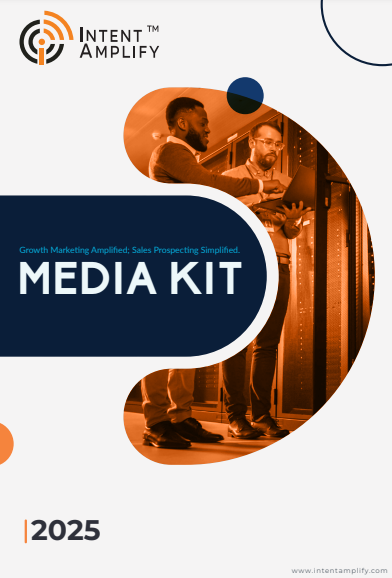
The Role of Geofencing and GPS Data in Location-Based Lead Generation
- Last updated on: October 28, 2025
Location-based lead generation is gaining momentum across B2B and B2C markets. Businesses today understand that relevance increases conversions. When messaging meets the right prospect at the right physical moment, engagement improves. This is where geofencing and GPS data become powerful drivers of targeted demand generation.
Many brands still rely on broad, high-volume targeting strategies. Those approaches often waste budget and dilute conversion quality. Location-based targeting introduces precision, timing, and context. It delivers higher-intent prospects directly into marketing funnels.
In this article, we explain how geofencing and GPS data support stronger leads and better ROI. We also explore how organizations can use these capabilities in account-based marketing and omnichannel campaigns.
Understanding Geofencing and GPS Data in Marketing
Geofencing uses virtual boundaries around real geographic areas. When a device enters or leaves that zone, it triggers marketing actions. These actions can include notifications, ads, messages, or data capture.
GPS data complements geofencing by providing precise coordinates. GPS data identifies user movement patterns, frequent locations, and behavioral trends. Combined, these technologies allow highly targeted campaign execution.
For example, a B2B company targeting logistics firms can geofence warehouses or distribution hubs. When devices enter the area, ads or outreach workflows activate. This ensures the message reaches relevant professionals in context.
Why Location Matters in Lead Generation?
Location reveals intent. When someone visits a business, office, event, or competitor site, they signal a purpose. Physical presence can indicate need, readiness, or decision-making involvement.
The global geofencing market size is projected to grow from approximately US $1.43 billion in 2025 to about US $4.80 billion by 2033 (CAGR ~16.3%).
Traditional digital targeting often lacks these real-world intent signals. Cookies and basic demographics provide limited context. However, location-based signals allow more accurate segmentation and timing.
This leads to key benefits:
- Higher-quality leads with stronger business relevance
- Reduced spending on unqualified clicks or impressions
- Improved engagement because messages feel timely and personalized
- Stronger account-based targeting for enterprise-level deals
In short, location targeting makes demand generation more cost-effective and revenue-focused.
Geofencing for Account-Based Marketing (ABM)
Account-based marketing requires precision. Teams must connect with decision-makers inside key target accounts. Geofencing strengthens this effort by aligning outreach to physical behavior.
Sales and marketing teams can place geofencing perimeters around:
- Corporate campuses
- Headquarters of high-value accounts
- Industry conferences
- Trade exhibitions
- Regional office clusters
Once prospects within target accounts move within these zones, campaigns activate. This allows deeper personalization at scale.
For example, a SaaS company targeting CFOs at regional banks can activate geofenced LinkedIn ads near banking conferences. It can also trigger email workflows based on event check-ins. This aligns messaging with the prospect’s business journey.
Using GPS Data for Personalized Outreach
GPS data provides behavioral insights that help refine segmentation. It shows how often someone visits relevant locations. It identifies patterns in work, travel, or operational movement.
This data enables personalized engagement. Instead of static campaigns, outreach evolves with real-world signals. For instance, a logistics technology provider could target operations managers who frequently visit ports or trucking hubs.
GPS data can also support territory-based sales models. Sales reps can receive real-time notifications when high-intent prospects are in nearby zones. This helps enable faster conversions and stronger relationship building.
Integrating Geofencing into Omnichannel Demand Generation
Location-based signals work best when integrated across multiple touchpoints. Omnichannel execution allows consistent messaging while adapting format and timing.
Geofencing can trigger:
- Programmatic display ads
- Personalized LinkedIn campaigns
- Email nurture sequences
- SMS or push notifications
- Retargeting within search and social platforms
- Sales outreach alerts
The goal is to synchronize message delivery with the prospect context. The more aligned the timing, the higher the conversion probability.
Compliance and Trust Considerations
Privacy must remain central in any location-based strategy. Companies should use transparent consent practices and comply with global regulations. Clear communication builds trust and increases participation.
Work only with reliable data partners who provide compliant and anonymized GPS data. Ethical data usage protects your brand and improves long-term engagement outcomes.
How Intent Amplify® Helps You Activate Location-Based Lead Generation?
At Intent Amplify®, we help growth teams convert high-intent prospects into a qualified sales pipeline. Our location-based lead generation capabilities combine:
- Geofencing precision targeting
- Enriched GPS movement intelligence
- Account-based marketing frameworks
- Real-time campaign triggers
- Omnichannel activation workflows
We align intent signals with your revenue goals. This ensures your message reaches the right audience at the right moment—when interest and intent are highest.
Looking to build smarter, more targeted pipeline?
Let’s discuss strategic targeting models that move faster, cost less, and convert stronger.
Visit: https://intentamplify.com/
FAQs
1. What is geofencing in lead generation?
Geofencing uses virtual boundaries around real locations to trigger targeted ads and outreach actions.
2. How does GPS data improve targeting?
GPS provides movement and behavioral patterns that signal intent, enabling more accurate segmentation.
3. Is location-based targeting only for retail?
No. B2B companies use it for ABM, event targeting, partner ecosystems, and territory sales.
4. Does location-based marketing require consent?
Yes. Transparent data privacy practices are essential for trust and legal compliance.
5. Is location-based targeting accurate?
Accuracy depends on GPS signals, device permissions, and the data provider’s quality.




